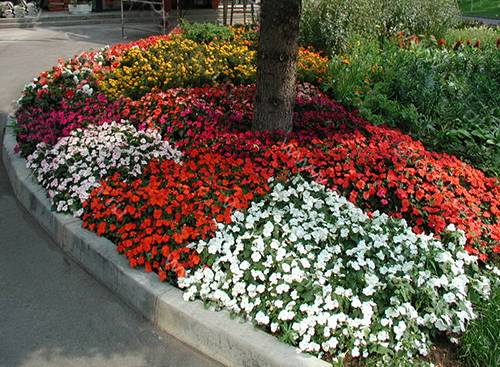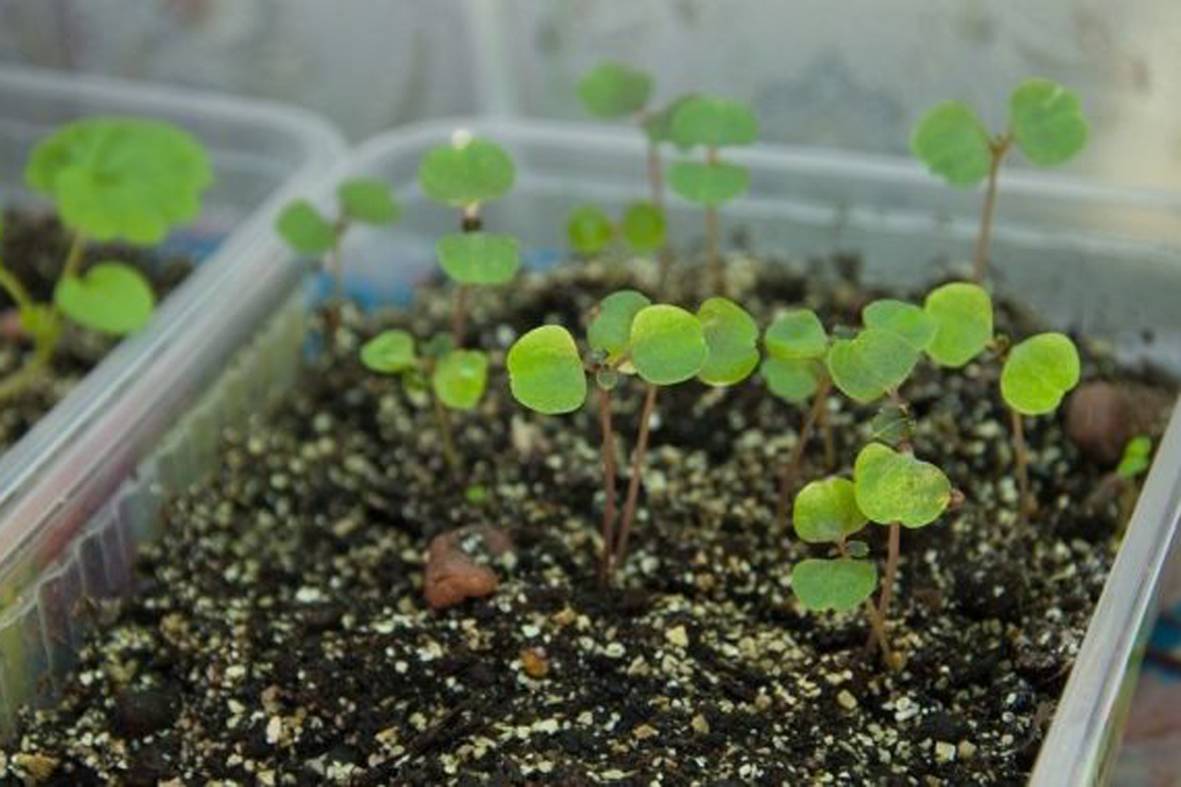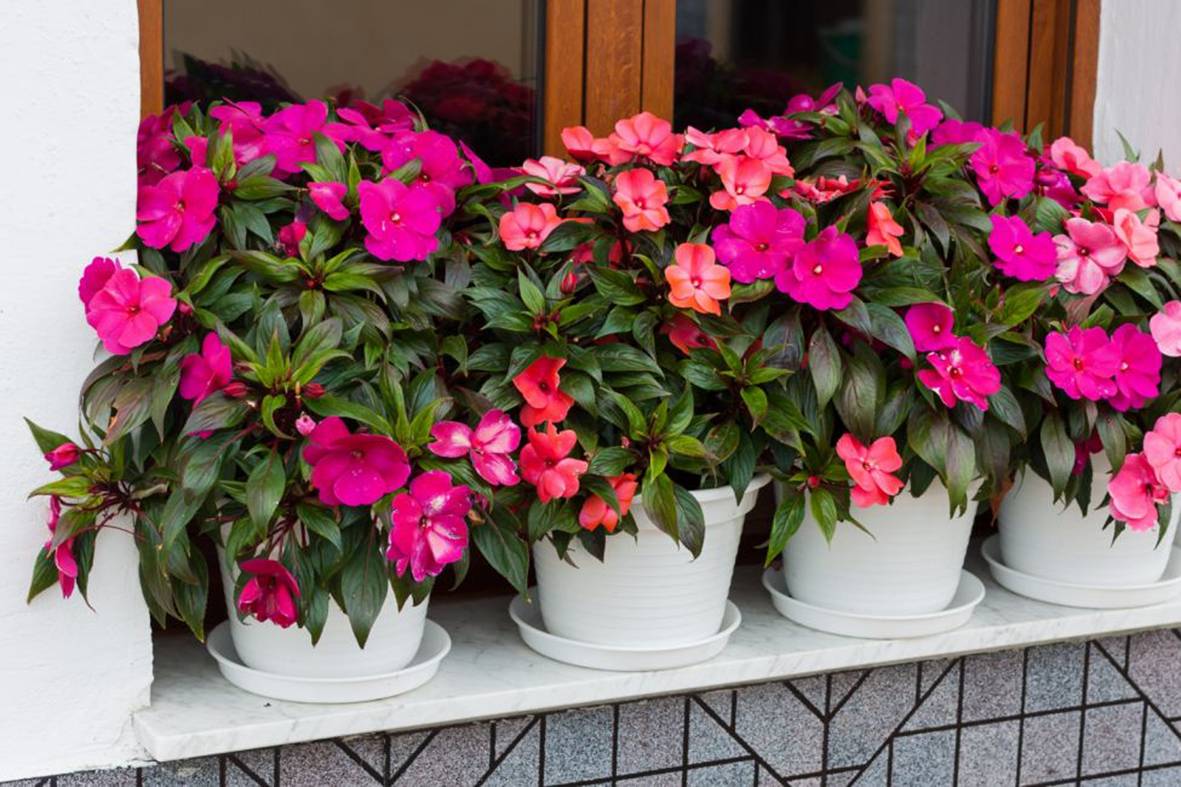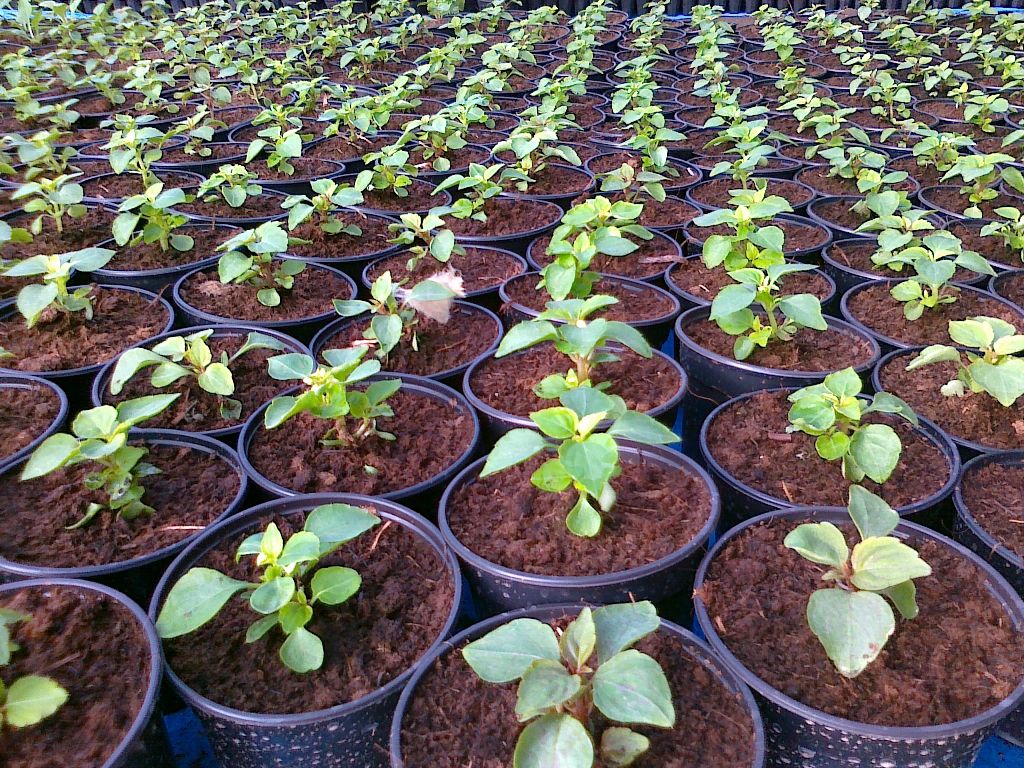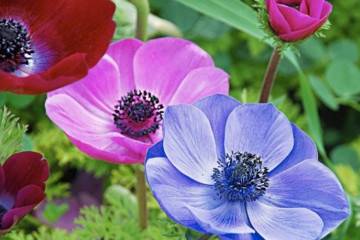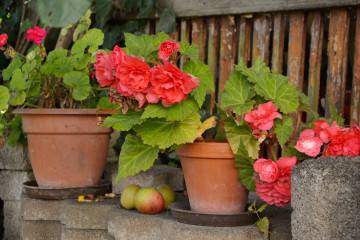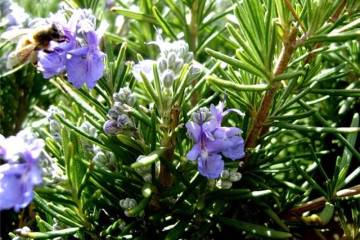Waller's balsam - growing and care
Content:
There are flowering indoor plants that are familiar to many flower growers in appearance, but the name is unknown. Waller's balm is just such a case. It is very often seen on the windowsills of apartments, but not everyone knows the name of this flower.
In addition to the most familiar species, there are many more balsam hybrids that amaze with a variety of colors and shapes of flowers. Each grower can grow them from seeds, you just need to know all the nuances of planting and caring for him in an apartment.
Description of Waller's balsam
Balsamin Valera, or Waller (in Latin Impatients Waleriana), belongs to the herbaceous perennials of the Balsamin family. The native land of origin of the flower is Asia and Africa, where it is often found in tropical forests.
Appearance
Waller's balsam is a herbaceous shrub, the size of which can vary from 15 to 60 cm. The stems are dense, succulent and prone to branching. The size and color of the leaves may vary, the shape is always oval with a slight serration at the edge.
How to grow from seeds at home
You can grow balsam from seeds purchased in the garden center; many manufacturers offer them (Biotechnics, etc.). Collecting your own seeds is not worth it if the plant is hybrid. Often flower lovers, having a great desire to grow a certain variety of Waller's balsam, resort to the method of growing this plant from seeds, but not always everything goes well.
The process itself is quite painstaking and requires strict adherence to the growing conditions and sequence of actions. Step by step it looks like this:
- The prepared container is filled with disinfected soil, purchased specifically for this purpose.
- The soil is moistened with a spray bottle.
- The seeds are laid out on the surface and each seed is slightly buried in the ground by pressing.
- The container is covered with foil or glass and placed in a warm, sunny place.
- After 6-8 days, when sprouts appear, the shelter is gradually opened to air and harden the plants.
- The soil moisture is constantly monitored and the temperature is maintained at 21-23 ° C.
- After the appearance of 2-3 true leaves, the seedlings can be cut into separate containers.
Home care
To achieve active growth and lush flowering, Waller's balsam must be provided with favorable conditions and properly looked after.
Light and temperature features
Balsam prefers warmth and light. The optimum temperature is 21-25 ° C, in winter you can lower it by 3-4 °. The main thing is that the thermometer does not fall below 12 ° C, otherwise the plant will either get sick or die.
It is better to place the flower on a light windowsill that faces south or east. It is advisable to choose a place that will be illuminated by diffused light throughout the day.
Watering and humidity
Balsam is a moisture-loving plant and requires regular watering. The soil should be moistened with standing water at room temperature as it dries out.
Balsam needs increased moisture levels. To increase its level, regular spraying is carried out and the plant is cleaned of dirt and dust with a soft cloth or cotton pad.
Top dressing and soil quality
For balsam, it is better to choose a loose and nutrient-rich soil. You can buy a special ready-made mixture for indoor flowers or make it yourself. To do this, I mix peat, sand and leaf humus in proportions 1: 1: 1, respectively.
As a top dressing, a complex ready-made fertilizer is used. The frequency of top dressing depends on the characteristics of the selected drug, usually it is applied every 10-14 days. Balsam especially needs dressing during the flowering period. During the dormant period, which falls on three winter months, the plant is not fed.
Tank size
Waller's balsam has a very developed root system. It is fibrous, and the main part of the roots is horizontal. In this regard, it is better to choose a pot that is not deep, but with a large diameter.
Pruning and replanting
In order for the balsam bush to have a compact and attractive shape, pruning is carried out. The shoots to be removed are:
- protruding beyond the desired shape;
- dried up;
- damaged by diseases or pests.
Also, to stimulate flowering, you need to regularly remove faded flowers. Despite the fact that balsam is fruitful for seeds, it is also better to remove them.
A flower transplant is carried out as it grows, on average every 2-3 years. Considering that balsam blooms more abundantly in a cramped pot, it is better not to change the size of the pot unnecessarily. The flower tolerates a transplant well, the best time for it is the spring.
What to do with a flower in winter
The time from December to February inclusive for balsam is a dormant period. If flowering has not ended yet, then in December all flowers and unopened buds are removed from the plant.
The flower pot is removed to a less lit place. Gradually reduce the frequency of watering and stop fertilizing. Top dressing is resumed only in March, when the flower enters the active phase and begins to bloom.
Flowering features
Like many other flowering houseplants, Waller's balsam has periods of activity and rest. Care differs from time to time.
| Activity period | Balsam has a rather long period of activity - from March to December. At this time, the flower develops well and blooms profusely. It is at this time that you need to pay maximum attention to the plant. |
| Dormant period | December to February is a dormant period. At this time, you need to create all the necessary conditions for the plant to enter this state gradually. Only in such a case will it bloom next year. |
Reproduction
There are two ways in which new copies of Waller's balsam are obtained. Growing from seeds at home and caring for seedlings are very difficult. This method is used only if you really want to grow a flower of a rare variety. Reproduction by cuttings is used more often.
Cuttings
This method is very often used by flower growers, as it is quite simple. Can be used as cuttings for pruning shoots that were removed during formative pruning.
Cuttings are placed in water and left until roots appear on them. Then they are planted in a container, which is placed in a warm room. After 6-8 days, they begin to gradually open the greenhouse, and then it is completely removed. In the process of rooting under a shelter, high humidity and a temperature of at least 22 ° C are maintained.
Growing problems
Florists often have difficulties in the process of growing Valera balsam. As a rule, they are associated with mistakes in care or improper growing conditions. The flower may suffer from lack of light, heat, or waterlogging.
If signs of disease are found, all conditions of the flower should be analyzed and the leaves and stems of the plant should be examined. If you see signs of a pest attack, you need to process the bushes immediately.
Waller's balsam takes pride of place on the windows of many flower lovers. Outwardly, it is familiar to many, but not everyone knows the name of this plant. Growing such a handsome man is not particularly difficult. To have a balsam in the house, which will delight with flowering every year, is within the power of everyone.

